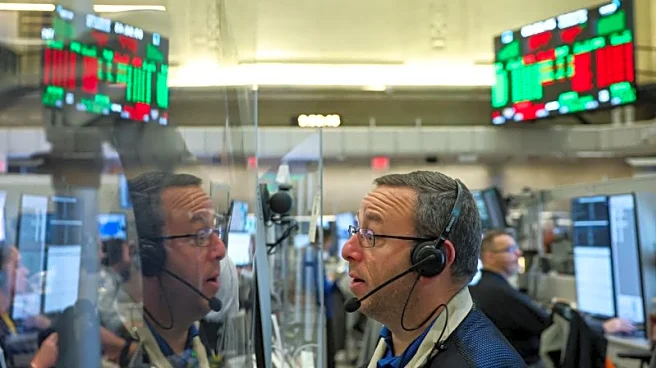What's Happening?
The ongoing U.S. government shutdown, now the second-longest in history, has resulted in a blackout of government economic data, including nonfarm payrolls and JOLTS job openings. In this context, investors
are turning to private employment data from ADP, expected later this week, to assess the health of the U.S. labor market. The Federal Reserve is currently divided, with Chair Jerome Powell adopting a hawkish tone, suggesting that the recent rate cut might be the last for the year. However, Fed Governor Christopher Waller has advocated for further policy easing to support a weakening labor market. The market is currently pricing in a 69% chance of a rate cut in December, down from 90% a week earlier, according to the CME FedWatch tool.
Why It's Important?
The lack of government economic data due to the shutdown creates uncertainty in the financial markets, as investors rely heavily on these indicators to make informed decisions. The Federal Reserve's divided stance adds to this uncertainty, impacting monetary policy expectations and market stability. A potential rate cut in December could influence borrowing costs, consumer spending, and overall economic growth. The situation also highlights the vulnerability of the U.S. economy to political disruptions, which can have far-reaching effects on global markets. Stakeholders, including businesses and policymakers, must navigate these uncertainties to maintain economic stability.
What's Next?
Investors and market analysts will closely monitor the upcoming ADP private employment data for insights into the U.S. labor market's condition. The Federal Reserve's next moves will be scrutinized, especially in light of the divided opinions among its members. Any further developments in the government shutdown could also impact economic forecasts and market sentiment. Additionally, global economic conditions, such as China's manufacturing slowdown, will continue to influence U.S. market dynamics.












